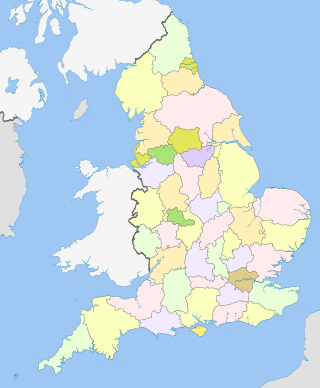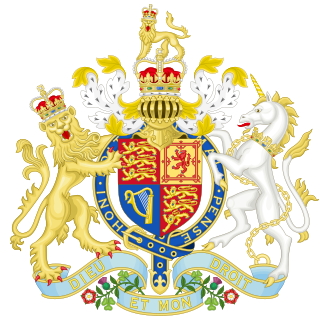This article needs additional citations for verification .(May 2016) |
Medina was a non-metropolitan district in Isle of Wight, England. It was abolished on 1 April 1995 and replaced by Isle of Wight Council.
This article needs additional citations for verification .(May 2016) |
Medina was a non-metropolitan district in Isle of Wight, England. It was abolished on 1 April 1995 and replaced by Isle of Wight Council.
From the first election to the council in 1973 until its abolition in 1995, political control of the council was held by the following parties: [1]
| Party in control | Years | |
|---|---|---|
| No overall control | 1973–1979 | |
| Liberal | 1979–1981 | |
| Alliance | 1981–1987 | |
| Conservative | 1987–1991 | |
| No overall control | 1991–1995 | |
| | This section is empty. You can help by adding to it. (April 2016) |
| | This section is empty. You can help by adding to it. (April 2016) |

Newport is the county town of the Isle of Wight, an island county off the south coast of England. The town is slightly north of the centre of the island, located in the civil parish of Newport and Carisbrooke. It has a quay at the head of the navigable section of the River Medina, which flows northwards to Cowes and the Solent. The 2021 census recorded a population of 25,407.

The counties of England are a type of subdivision of England. Counties have been used as administrative areas in England since Anglo-Saxon times. There are three definitions of county in England: the 48 ceremonial counties used for the purposes of lieutenancy; the 84 metropolitan and non-metropolitan counties for local government; and the 39 historic counties which were used for administration until 1974.

The Borough of Fareham is a local government district with borough status in Hampshire, England. Its council is based in Fareham. Other places within the borough include Portchester, Hill Head, Sarisbury, Stubbington, Titchfield and Warsash. The borough covers much of the semi-urban area between the cities of Southampton and Portsmouth, and is part of the South Hampshire conurbation. The neighbouring districts are Eastleigh, Winchester, Portsmouth and Gosport. The district's southern boundary is the coast of the Solent.

Medina was a non-metropolitan district with the status of a borough on the Isle of Wight in England from 1974 to 1995.

South Wight was a non-metropolitan district with the status of a borough on the Isle of Wight in England from 1974 to 1995.

The Local Government Act 1972 is an act of the Parliament of the United Kingdom that reformed local government in England and Wales on 1 April 1974. It was one of the most significant Acts of Parliament to be passed by the Heath Government of 1970–74.

Isle of Wight Council, known between 1890 and 1995 as Isle of Wight County Council, is the local authority for the Isle of Wight in England. Since 1995 it has been a unitary authority, being a county council which also performs the functions of a district council. It is based at County Hall in Newport. The council has been under no overall control since 2021, being led by a coalition of independent, Green, and Our Island councillors called the Alliance Group.
As a geographical entity distinct from the mainland, the Isle of Wight has always fought to have this identity recognised. The Isle of Wight is currently a ceremonial and Non-metropolitan county and local government is controlled by unitary authority. Prior to the 2024 United Kingdom General election, the island was the highest populated Westminster constituency in the country.
In England, an unparished area is an area that is not covered by a civil parish. Most urbanised districts of England are either entirely or partly unparished. Many towns and some cities in otherwise rural districts are also unparished areas and therefore no longer have a town council or city council, and are instead directly managed by a higher local authority such as a district or county council.
Blyth Valley Borough Council elections were generally held every four years between the council's creation in 1974 and its abolition in 2009. Blyth Valley was a non-metropolitan district in Northumberland, England. The council was abolished and its functions transferred to Northumberland County Council with effect from 1 April 2009.
Castle Morpeth Borough Council elections were generally held every four years between the council's creation in 1974 and its abolition in 2009. Castle Morpeth was a non-metropolitan district in Northumberland, England. The council was abolished and its functions transferred to Northumberland County Council with effect from 1 April 2009.
Darlington Borough Council elections are held every four years. Darlington Borough Council is the local authority for the unitary authority of Darlington in County Durham, England. Until 1 April 1997 it was a non-metropolitan district.
The wards and electoral divisions in the United Kingdom are electoral districts at sub-national level, represented by one or more councillors. The ward is the primary unit of English electoral geography for civil parishes and borough and district councils, the electoral ward is the unit used by Welsh principal councils, while the electoral division is the unit used by English county councils and some unitary authorities. Each ward/division has an average electorate of about 5,500 people, but ward population counts can vary substantially. As of 2021 there are 8,694 electoral wards/divisions in the UK. An average area of wards or electoral divisions in the United Kingdom is 28.109 km2 (10.853 sq mi).

The unitary authorities of England are a type of local authority responsible for all local government services in an area. They combine the functions of a non-metropolitan county council and a non-metropolitan district council, which elsewhere in England provide two tiers of local government.

The Local Government Commission for England was the body responsible for reviewing the structure of local government in England from 1992 to 2002. It was established under the Local Government Act 1992, replacing the Local Government Boundary Commission for England. The Commission could be ordered by the Secretary of State to undertake "structural reviews" in specified areas and recommend the creation of unitary authorities in the two-tier shire counties of England. The Commission, chaired by John Banham, conducted a review of all the non-metropolitan counties of England from 1993 to 1994, making various recommendations on their future.
Hove was a non-metropolitan district in East Sussex, England. It was abolished on 1 April 1997 and replaced by Brighton and Hove.
South Wight was a non-metropolitan district in Isle of Wight, England. It was abolished on 1 April 1995 and replaced by Isle of Wight Council.
Isle of Wight Council is the local authority for the Isle of Wight, a unitary authority and non-metropolitan county in England. Since the last boundary changes in 2021 the island has been divided into 39 electoral divisions, each of which elects one councillors. Elections are held every four years.